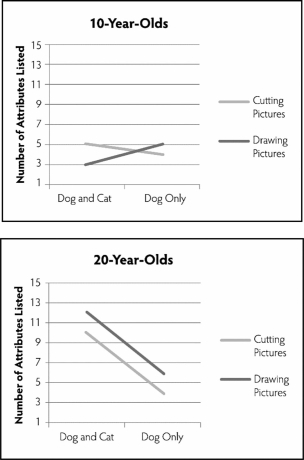(The first paragraph is repeated from earlier.The second paragraph is specific to the new set of questions.The first paragraph is necessary to set up the original study. )
Dr.Elder was interested in the way people recognize objects as members of categories.For example,what makes us recognize a dog as being a dog and not a cat? More specifically,he was curious as to whether people think about categories in a more complex way if they contemplate an "opposite" category first.For example,does a person think more differently about the category of "southern" if they are also thinking about the category of "northern"? He is also curious as to whether people categorize differently if they are exposed to category members compared with generating category members.Dr.Elder has four groups of participants (with 30 people in each group) .In Group A,participants were told to cut out pictures of dogs and cats from magazines.In Group B,participants were told to cut out pictures of just dogs from magazines.In Group C,participants were told to draw pictures of cats and dogs.In Group D,participants were told to draw pictures of just dogs.After doing this for 30 minutes,participants in all groups were asked to list the attributes that define the "dog" category.Having a higher number of attributes listed was considered to be an indication of thinking about the category in a more complex way.
Dr.Elder also is curious as to whether categorization happens similarly for children as it does for adults.As such,he recruits a group of 10-year-olds and a group of 20-year-olds to participate in the study.The results are below.

-Based on the graphs above,Dr.Elder should conclude which of the following?
Definitions:
Q3: Which of the following could NOT be
Q18: Dr.LaGuardia is curious as to whether children
Q20: Dr. Sheffield is a clinical psychologist who
Q30: Dr. Ewell, a developmental psychologist, is planning
Q30: Why might a researcher debrief his participants
Q31: According to the textbook,what is the problem
Q37: Explain the difference between full counterbalancing and
Q49: Which of the following is an example
Q54: State two questions that you might ask
Q55: Establishing construct validity would probably be most